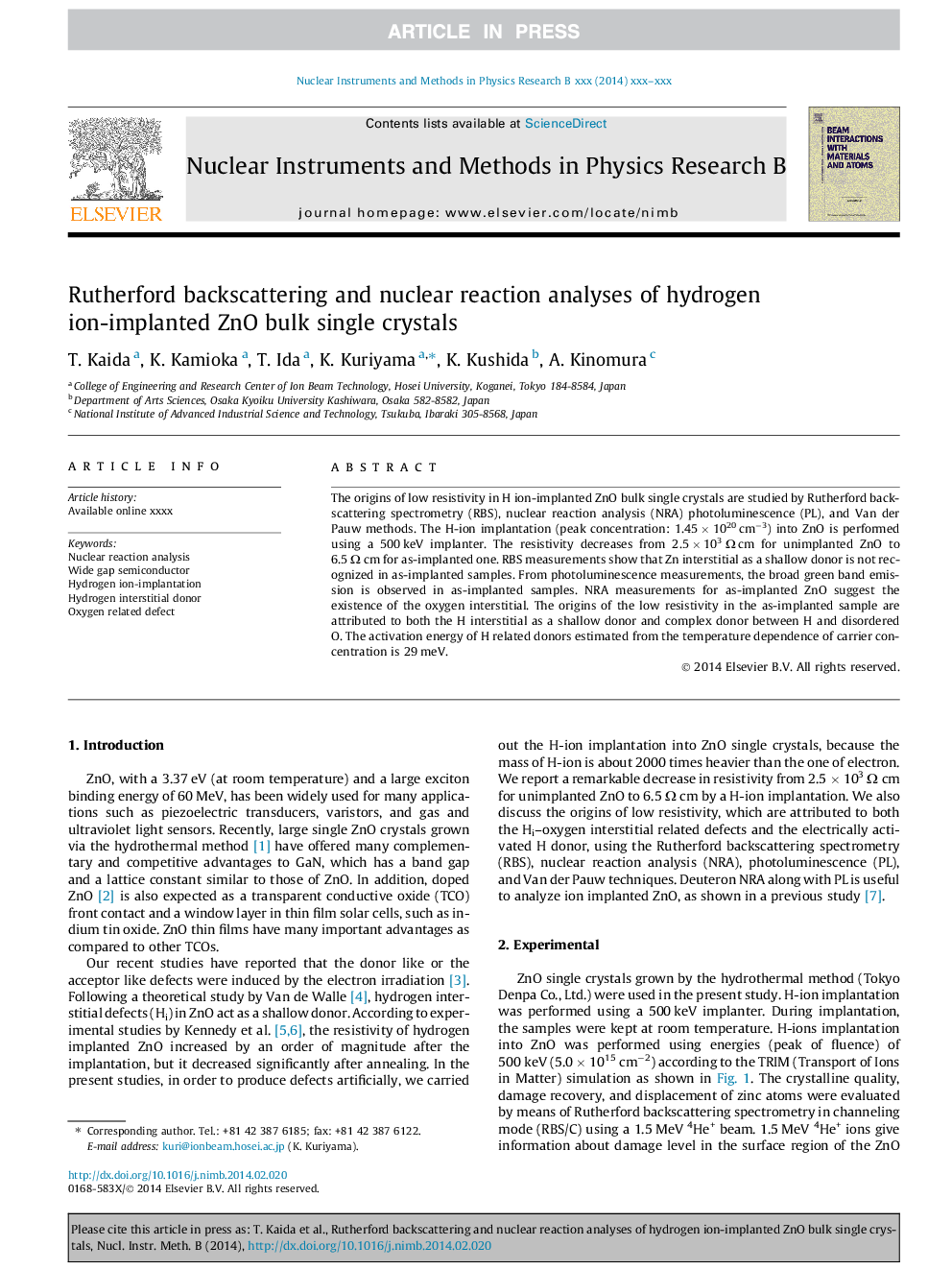| Article ID | Journal | Published Year | Pages | File Type |
|---|---|---|---|---|
| 8041283 | Nuclear Instruments and Methods in Physics Research Section B: Beam Interactions with Materials and Atoms | 2014 | 4 Pages |
Abstract
The origins of low resistivity in H ion-implanted ZnO bulk single crystals are studied by Rutherford backscattering spectrometry (RBS), nuclear reaction analysis (NRA) photoluminescence (PL), and Van der Pauw methods. The H-ion implantation (peak concentration: 1.45 Ã 1020 cmâ3) into ZnO is performed using a 500 keV implanter. The resistivity decreases from 2.5 Ã 103 Ω cm for unimplanted ZnO to 6.5 Ω cm for as-implanted one. RBS measurements show that Zn interstitial as a shallow donor is not recognized in as-implanted samples. From photoluminescence measurements, the broad green band emission is observed in as-implanted samples. NRA measurements for as-implanted ZnO suggest the existence of the oxygen interstitial. The origins of the low resistivity in the as-implanted sample are attributed to both the H interstitial as a shallow donor and complex donor between H and disordered O. The activation energy of H related donors estimated from the temperature dependence of carrier concentration is 29 meV.
Related Topics
Physical Sciences and Engineering
Materials Science
Surfaces, Coatings and Films
Authors
T. Kaida, K. Kamioka, T. Ida, K. Kuriyama, K. Kushida, A. Kinomura,
